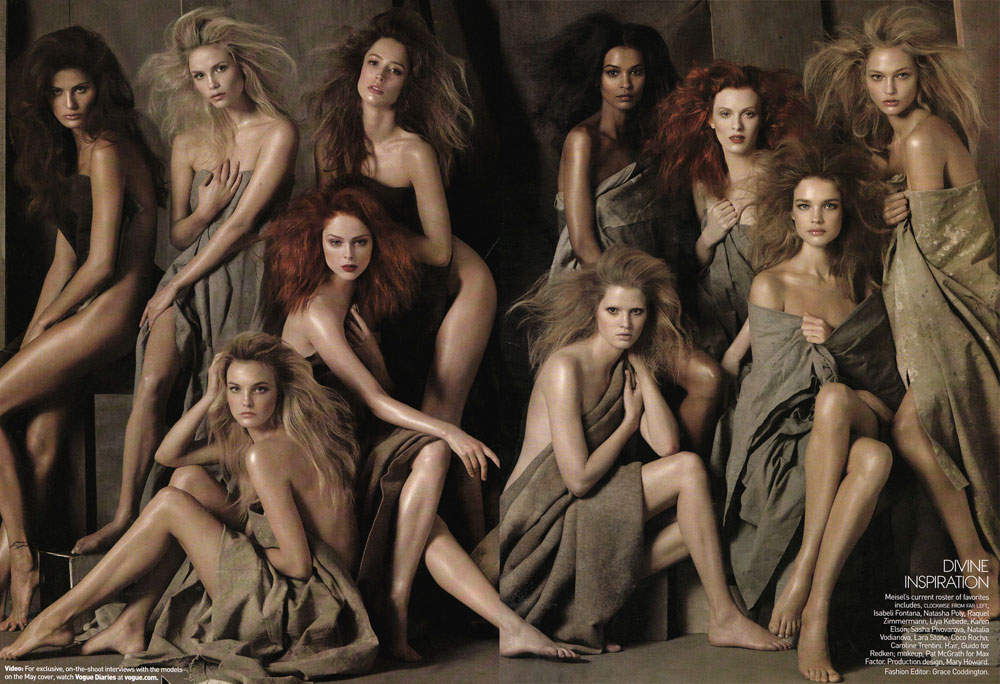 We all go through that Barbie phase,you know that at some point in your life, you have admired her, every girl wants to be a Barbie Girl. You've read those fashion magazines, flipped through the glossy pages looking at the beautiful models in their beautiful clothes. We all have wished maybe at least once that we could be more like them. Taller, thinner, tanner, beautiful. This is exactly what Susan Jane Gilman, and Anastasia Higginbotham write against in their articles. As children, teenagers, and even as adults we are forced to accept a fixed definition of beautiful. Do girls who don't meet this "definition" not count as beautiful? This seems to be the general idea that the media gives off.
We all go through that Barbie phase,you know that at some point in your life, you have admired her, every girl wants to be a Barbie Girl. You've read those fashion magazines, flipped through the glossy pages looking at the beautiful models in their beautiful clothes. We all have wished maybe at least once that we could be more like them. Taller, thinner, tanner, beautiful. This is exactly what Susan Jane Gilman, and Anastasia Higginbotham write against in their articles. As children, teenagers, and even as adults we are forced to accept a fixed definition of beautiful. Do girls who don't meet this "definition" not count as beautiful? This seems to be the general idea that the media gives off.Gilman tells us how Barbie gave her the idea that she wasn't good enough, she wasn't pretty enough as a child. Barbie's characteristics are extremely fake, and her body shape is impossible to obtain, with completely wrong proportions. Yet this doll is seen as the epitome of beauty for young girls. Every girl plays with this doll, every girl admires her, loves her, wants to look just like her. Gilman tells us how this was definitely not healthy, girls of different races, beautiful in their own way, want to be blonde with bright blue eyes because thats what beauty is. "If you didn't look like Barbie you didn't fit in. Your status was diminished. You were less beautiful, less valuable, less worthy. If you didn't look like Barbie, companies would discontinue you,". As Gilman says, dolls, or really any toy, often give children an idea of what is considered important and valuable in society, it also determines for children what is "pretty" or beautiful, sadly Barbie is what determines this for young girls.
Higginbotham does almost the same thing only focusing on more of a adolescent fad, replacing Barbie dolls with teen fashion magazines. All of these magazines have photos and advertisements with breathtakingly gorgeous models, all tall and skinny. This is what will be considered beautiful by teenagers. This is what every girl wishes she looked like. Sadly, many of these models are photoshopped or have loads of make up slathered onto them. Higginbotham discusses these fashion magazines and how they convince teenage girls that there is only one kind of pretty, everyone can strive to achieve this prettiness.
This regulation of what is beautiful or what is perfect is done by the media. In The Handmaid's Tale , it was done by the school at which the handmaids were taught. Aunt Lydia, repeatedly mentioned throughout the novel, can be considered the equivalent of the media in our society, teaching what is wrong and right, good and bad, like pretty and ugly.

Hey Ash!
ReplyDeleteI thought that you made some really good points about the two articles you mentioned, and your opinion came through pretty clearly. Personally I agree with you that most probably every girl possessed (or still possesses) a Barbie Doll, I was one of them.
Did you think about the other side there is to Barbie? She gives little girls (and some boys I suppose) an opportunity to be creative, to explore their creativity by building houses and beds for them and by inventing stories about their lives, deciding what their 'lives' should be like. Of course this aspect could also lead in a different direction: The need to control the situation, but seriously, they're just little girls trying to have some fun and what's wrong with having a little fantasy?
You should also consider that nowadays there are more Barbies than the blonde, tanned, blue-eyed one. I was walking through Khan Market a few days ago and in the window of a store I saw an Indian Barbie in a Sari. When I was young I probably had about 60 Barbie Dolls, including a black one, showing that there are more than one kind and little girls don’t just see the blond haired but also the Indian, the Chinese and the black one.
I’d say that Barbie can give little girls (and boys?) the opportunity to imagine, and yes, to be creative, but I would also say that this imagination is being constrained. Dolls should act as mediums for imagination, for entertainment, but Barbie has become somewhat of a role model for little girls. There is nothing wrong with girls looking up to a doll, but I think we can all say that Barbie might not be the best one for this.
ReplyDeletehttp://www.xahlee.org/Periodic_dosage_dir/lacru/_p/mark_ryden/barbie.jpg
And yes there definitely has been and improvement in types, and variety of Barbie dolls produced now, but they all still give off the same message. Also these different cultured Barbie’s are usually called special edition, emphasizing on their difference than the regular Barbie doll. (an exception to this might be the African American Barbie doll)